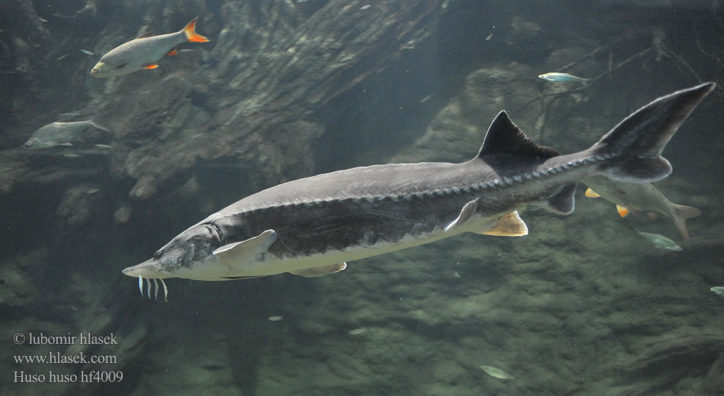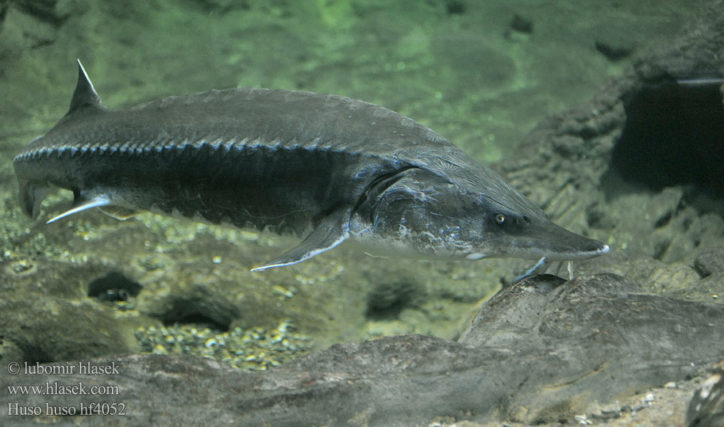Fish of the Huso genus of the Acipenseridae family of the Acipenseriformes order of the Chondrostei subclass.

(Beluga. Photo by © Lubomir Hlasek. hlasek.com)
Beluga, or European sturgeon (Huso huso) was first described in 1758 by the Swedish scientist Carl Linnaeus (1707 – 1778). It is an anadromous pelagic species. It inhabits sea waters at depths of 70-180 meters. It spawns in large rivers, in which juveniles live throughout the first year of life. According to some sources, the recorded maximum length is 420 cm. According to other sources, the fish can grow up to 900 cm. Specimens up to 200 cm are more common. The maximum weight is 3,200 kilograms. It feeds on medium-sized fish, crustaceans, mollusks and polychaetes.

(Beluga. Photo by © Lubomir Hlasek. hlasek.com)
Most likely, the population, which previously inhabited the Adriatic Sea, no longer exists. The latest records from Croatia, where beluga swam for spawning in the Sava River, date back to the middle of the previous century. The last time it was seen in the Po River, Italy, the main breeding site of the Adriatic beluga, was in 1972. The current of the Danube in Serbia below the dam of the Iron Gate I Hydroelectric Power Station, where its population is in danger of passing away as well, is the closest place from the Adriatic coast, where there are still chances to meet this magnificent fish.
It is listed in the IUCN Red List as a species remaining in critical condition (CR).
Names of beluga (Huso huso) in other languages are as follows:
Blini i Europës (Albanian), Моруна (Moruna) (Bulgarian), Moruna, Beluga (Croatian, Serbian, Slovenian), Vyza velká (Czech), Europäische Hausen, Beluga-Stör (German), Ακιπήσιος (Akipisios) (Greek), Béluga (French), Viza (Hungarian), Storione attilo, Storione beluga (Italian), Esturjão-beluga, Esturjão-branco (Portuguese), Moruna (Romanian), Белуга (Beluga) (Russian), Esturión beluga (Spanish), Mersin morinası (Turkish).